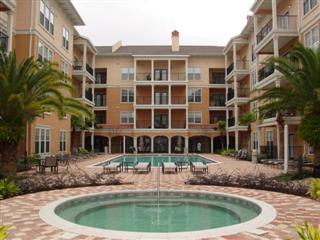
SARASOTA, FL - You know by now that Fannie Mae and Freddie Mac are the largest secondary market wholesalers for single family mortgage loans. But what you may not know is that both Government Sponsored Entities also purchase loans secured by multifamily rental properties. Unlike their troubled single family loans, the GSE's multifamily loans are performing well because they are underwritten based upon each property's cash flow. So much so that Phil Weber, senior vice president of Fannie Mae's multifamily division, said that the mortgage giant invested $20 billion in multifamily housing during the first half of 2008 and is increasing its product offerings.
Not to be outdone, Freddie Mac recently launched its student housing multifamily initiative as a way to boost the amount of rental-housing loans it buys. Pumping more money into rental projects by GSEs is particularly good news in Southwest Florida because so many of our residents have lost their homes and are closed out of the credit markets. Additionally, both GSEs invest in multifamily for the elderly, a major housing category statewide.
In recent years, aggressive conduit lenders that pool income-producing real estate loans have upstaged the GSE's multifamily programs with higher loan amounts. Conduits assemble loans and package them for Wall Street to sell as commercial mortgage-backed securities. Conduits were also more competitive than insurance companies that have historically been a primary source for high-quality rental projects.
But just as for single-family backed securities, investors have all but disappeared for CMBS. Furthermore, Southwest Florida's banks are suffering from defaulted construction loans and are not looking to add multifamily loans to the mix.
Multifamily underwriting is substantially different from single-family lending. Lenders begin by analyzing the rents, collections and vacancy to determine the probability of receiving the same level of rents in the future. Then they gather data regarding the fixed and variable operating expenses. For example, real estate taxes, hazard insurance and management fees are fixed expenses.
Ongoing maintenance cost for items such as interior painting, heating and air conditioning repair and parking lot repairs are variable and more difficult to estimate. They also plug in long-term replacement reserves for capital items such as the roof, asphalt and fixtures.
Subtracting the operating expenses and replacement reserves from the rents leaves net income available to pay debt service on the proposed loan. Over the years, the GSEs required a cushion or debt service coverage ratio between 1.15 and 1.25.
For details on the approved Fannie Mae and Freddie Mac multifamily lenders and their programs, click on the "multifamily" buttons at fanniemae .com and freddiemac.com.
Source: HeraldTribune.com